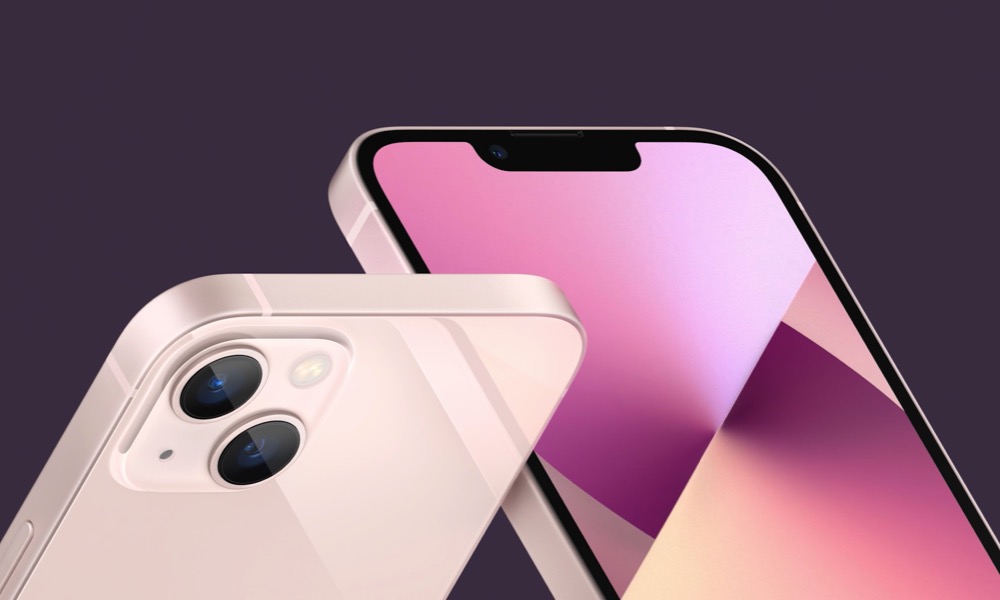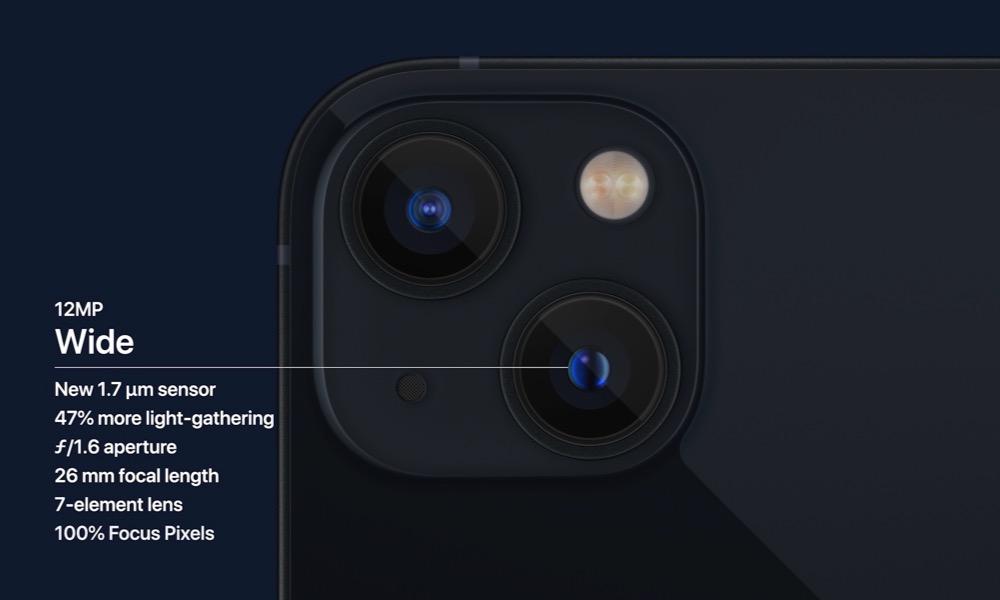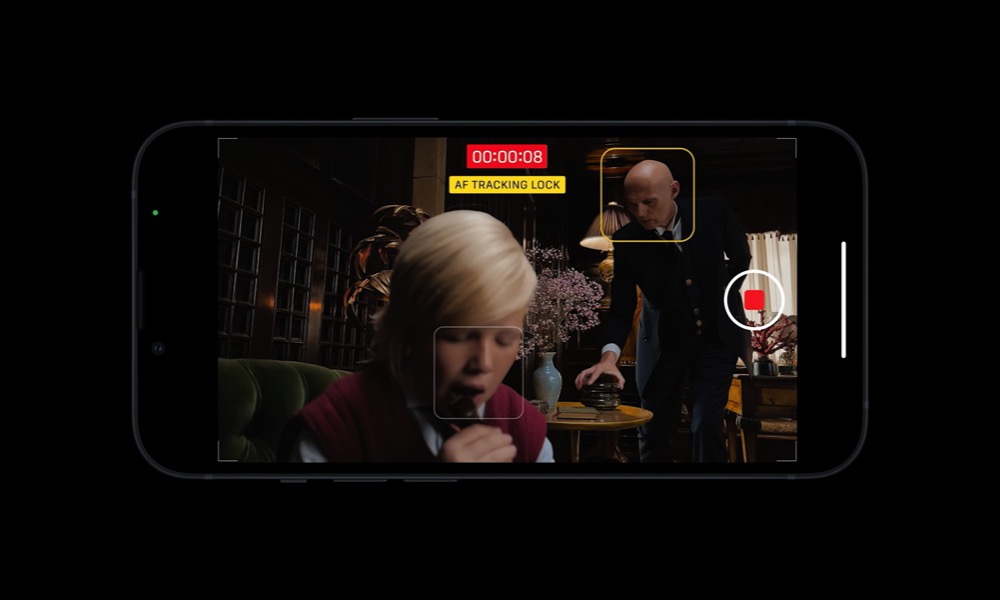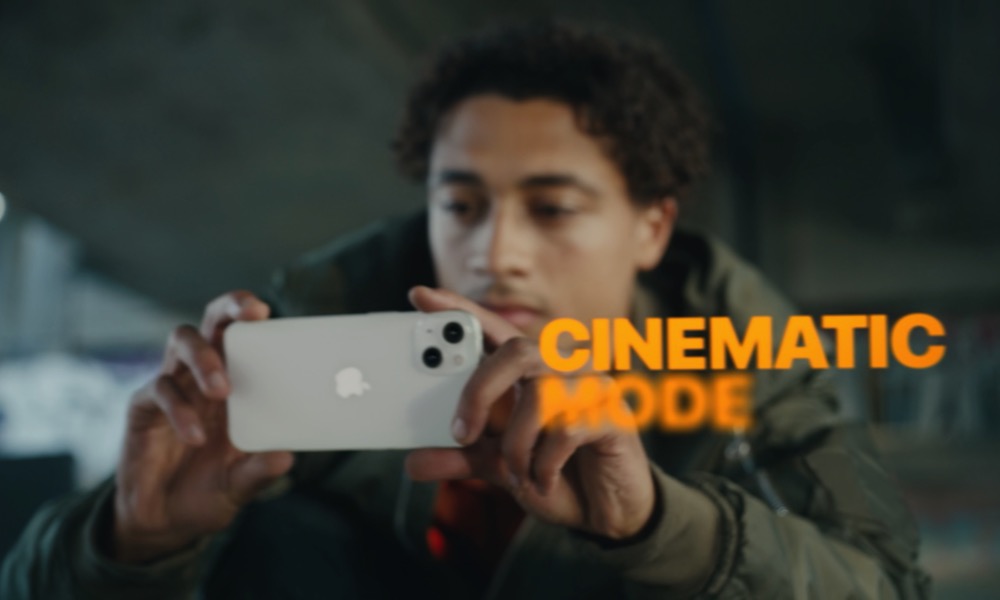Apple Finally Debuts iPhone 13, iPhone 13 mini with A15 Chip, New Cameras, Cool Cinematic Video (and More)
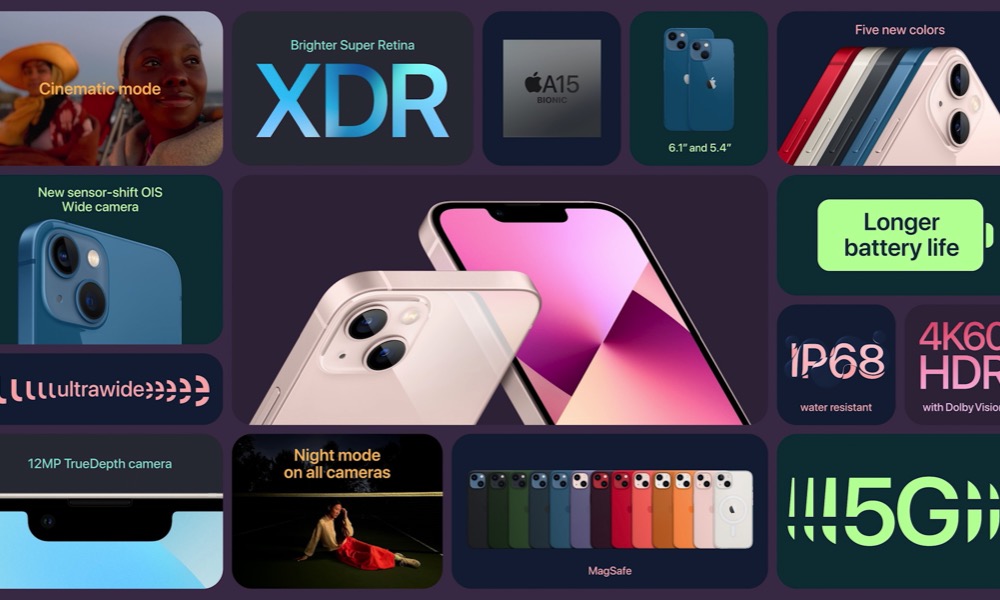 Credit: Apple
Credit: AppleToggle Dark Mode
As expected, it was Apple’s new iPhone lineup that headlined today’s California streaming event, with the company first showing off its two standard iPhone models — the 6.1-inch iPhone 13 and the 5.4-inch iPhone 13 mini.
Apple’s VP of iPhone Product Marketing, Kaiann Drance, took the lead, highlighting the new look for the iPhone 13, which builds on the design of last year’s iPhone 12 models with some nice enhancements.
Firstly, as we’ve been seeing in renders for the past several months, the dual-camera system now has the lenses arranged diagonally instead of vertically. Drance didn’t say whether there were any technical reasons for the change, but at the very least it’s a nice way to differentiate the new iPhone from last year’s model.
Five New Colours and a Smaller Notch
Apple is also debuting the two new iPhone 13 models in five new colours — one short of what recent rumours had suggested.
Although we will indeed see the anticipated Pink iPhone, it looks like this is effectively replacing this past spring’s Purple, rather than complementing it.
We’re also going to see the usual (PRODUCT)RED and a shade of Blue, but it looks like “Midnight” is going to be the new Black, and Apple has debuted a whole new colour this year that it’s calling “Starlight” which is more of an off-white that appears to sit somewhere between silver and white.
Further, after years of reports that Apple was aiming for a smaller notch, it looks like it’s finally pulled it off by cramming the True Depth camera components closer together. The result is a 20% reduction in the notch size across the entire iPhone 13 lineup.
A15 Bionic
As usual, a new iPhone brings a new A-series SoC, and as Drance noted, while everyone else is still playing catch-up with last year’s processors, Apple is upping its performance game even further.
Hope Giles, Apple’s VP of Engineering Program Management Hardware Technologies, took the virtual stage to highlight the company’s latest 5nm accomplishment, noting that this year it’s managed to pack in a staggering 15 billion transistors.
The result is a six-core CPU with two high-performance cores and four high-efficiency cores, along with increased machine learning accelerator performance that will power things like text-to-speech in Siri and on-device processing of directions in Apple Maps. Giles notes that it’s 50% faster than the leading competitor’s SoCs.
The A15 also features a four-core GPU that delivers 30% faster graphics performance compared to competing smartphones, and a 16-core Neural Engine that can handle 5.8 trillion operations per second, resulting in even more advanced computational photography features.
Camera Improvements
It’s fair to say that in recent years it’s been the camera that has gained the most improvements each year, and the iPhone 13 is no exception.
The main Wide camera has been upgraded with the kind of 1.7-micron sensor that was found only on the 6.7-inch iPhone 12 Pro Max last year, resulting in 47% more light capture. This means less noise in photos, brighter results, and shorter capture times for Night Mode photos. This is backed by a wider f/1.6 aperture, and 26mm 7-element lens.
Although the Ultra-Wide camera retains the same five-element lens as before, it features an f/2.4 aperture and now features a faster, custom-designed sensor.
Cinematic Video
Perhaps the coolest feature to come to the iPhone 13 this year is a new Cinematic Video Mode, which allows for creative use of focus to create much more artistic videos.
As Apple’s Human Interface Designer Johnnie Manzari explains, Cinematic Mode uses a filmmakers’ technique known as “rack focus,” where cinematographers shift between foreground and background focus in the same scene.
For example, the camera may start by focusing on a subject who is looking at the screen, with the background slightly more blurry, and then shift as the character turns their head to bring the background into focus.
While it’s already possible to accomplish this somewhat manually, the power of the A15 chip in the iPhone 13 will now handle it automatically using the same kind of depth-mapping technology that supports Portrait Mode photos — and it’s going to do it all automatically using machine learning.
Cinematic Mode will anticipate when a subject is about to enter the frame, and intelligently rack focus when they do. It will also be able to determine when somebody gazes away from the camera, changing focus automatically to bring the background into view. It will even hold the focus on a subject as they move around the scene.
To accomplish this, Manzari says that Apple’s designers and engineers studied the art of cinematography, reviewing various filmmaker’s techniques and hundreds of hours of existing footage to train the computational algorithms so that the whole thing just works.
Of course, it will also be possible to adjust focus manually. Simply tap on a subject to bring it into focus, and tap a second time to lock focus on the subject and track them as they move throughout the scene.
Best of all, just like Portrait Mode photography, all of this depth mapping information is stored with the video. This means that even if you make a mistake, or want to tweak things, you can choose to adjust the focus later in post-production — something that isn’t even possible in traditional cinematography.
Battery Life
Amazingly, Apple has managed to make some significant improvements to the iPhone’s battery life again this year, even with a brighter screen and more powerful photography features.
Much of this is due to the A15 chip being significantly more power efficient than its predecessor, but the iPhone 13 also packs in a slightly larger battery. The result is that the iPhone 13 mini will run for 1.5 hours longer than the iPhone 12 mini, and the iPhone 13 can keep going for up to 2.5 hours more than its predecessor.
Other Improvements
While the iPhone 13 and iPhone 13 mini feature the same basic Super Retina XDR OLED display technology as last year, Apple has managed to push the brightness up by 28%. This puts it at the same level as the iPhone 12 Pro, with 800 nits of brightness for normal content, and 1200 nits of peak brightness for HDR photos and videos. The display is also now more power-efficient.
Apple has also improved the 5G capabilities of the iPhone 13, with custom-designed antennas and radio components that offer support for more 5G frequency bands, which means that the iPhone 13 will support 5G in more places. Specifically, Drance notes that the iPhone 13 will be able to offer 5G on over 200 carriers across 50 different countries and regions.
Pricing, Capacities, and Availability
The pricing for the two iPhone 13 models remains in line with their iPhone 12 counterparts, with the iPhone 13 mini starting at $699, and the iPhone 13 starting at $799.
However, not only do this year’s iPhones offer nice improvements at these prices, but Apple has once again doubled the storage for both of these models across the board. This means that $699 will now get you a 128GB iPhone 13 mini, for the same price as last year’s 64GB model, and there’s also a 512GB version on the top-end, that replaces the 256GB iPhone 12 models.
The iPhone 13 and iPhone 13 mini will both be available for pre-order starting this Friday, and are expected to start arriving in stores — and in people’s hands — by next Friday, September 24.

